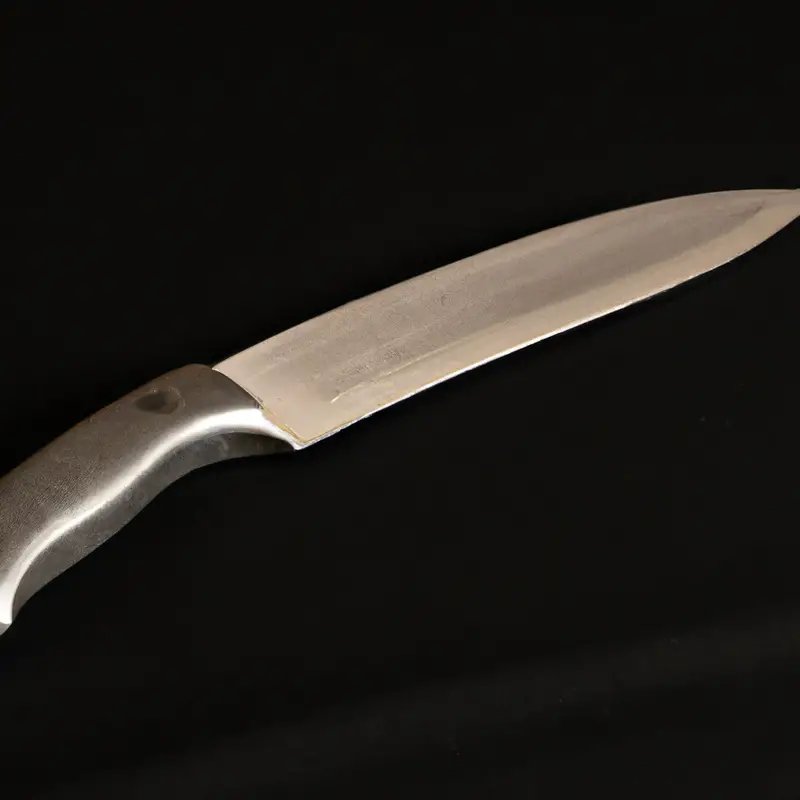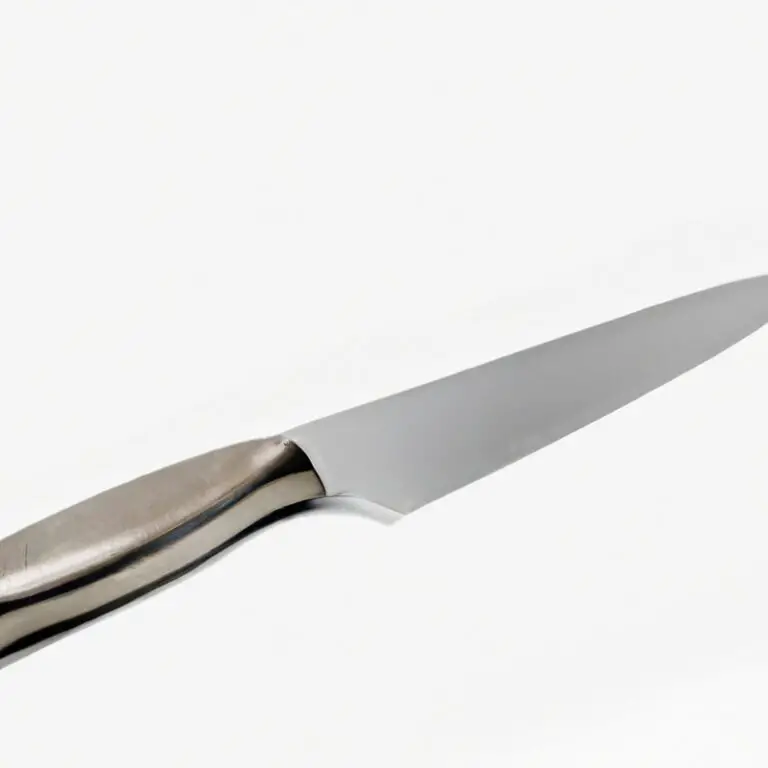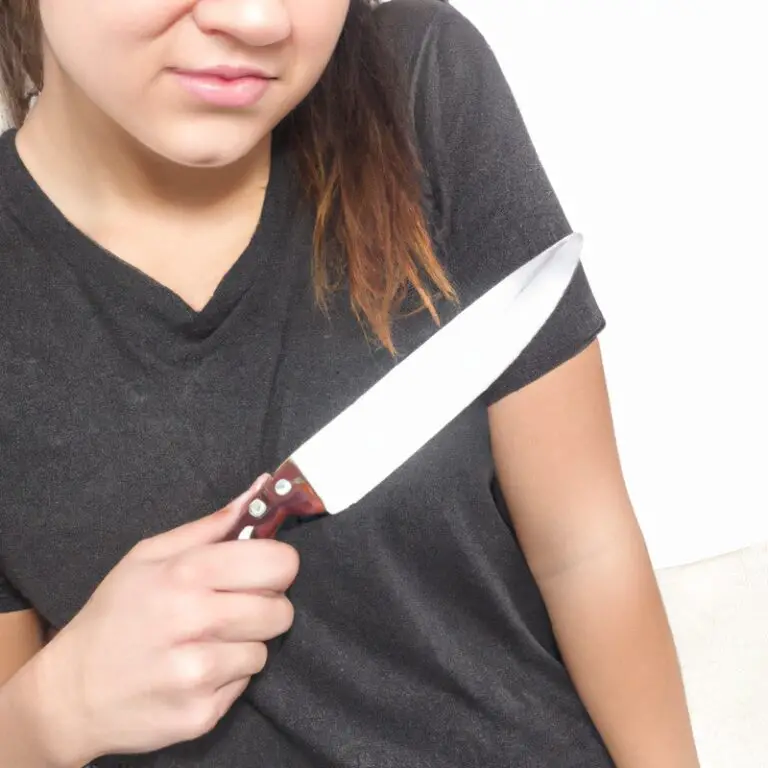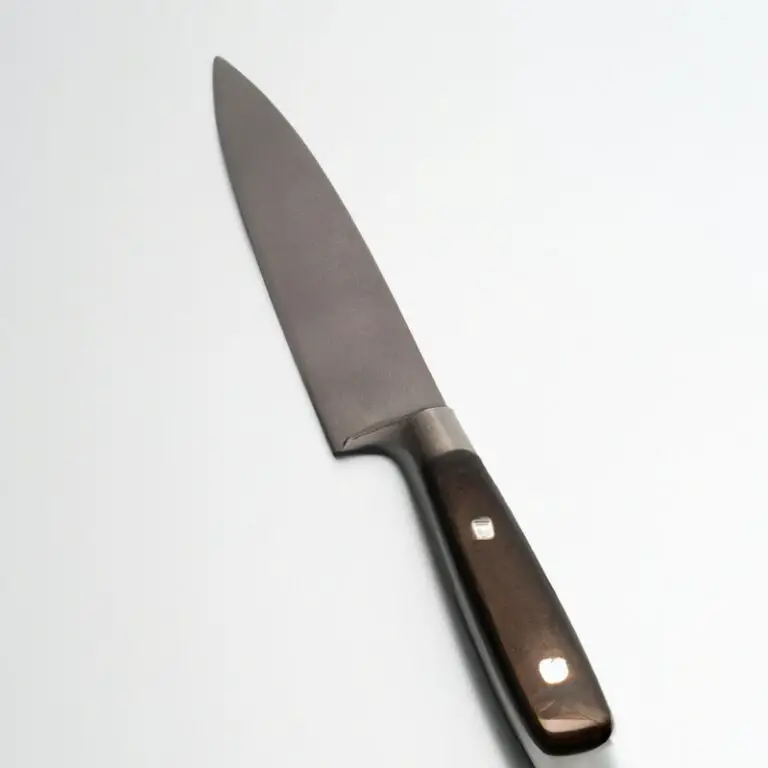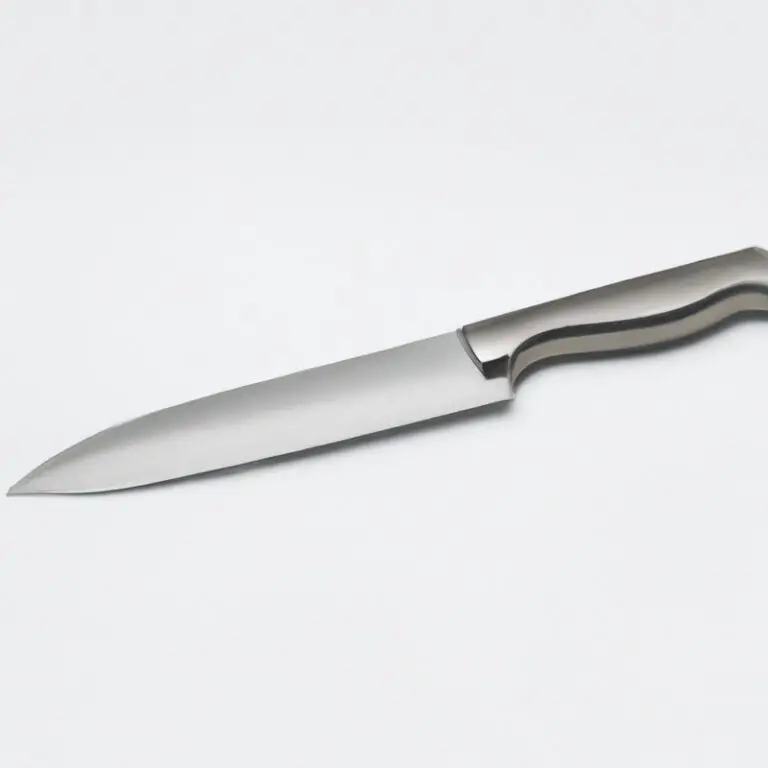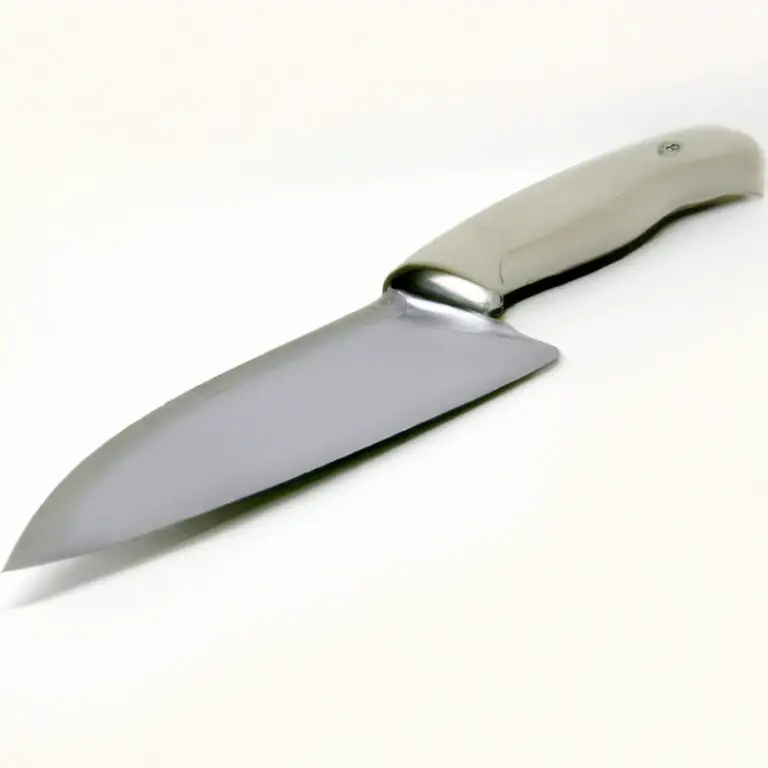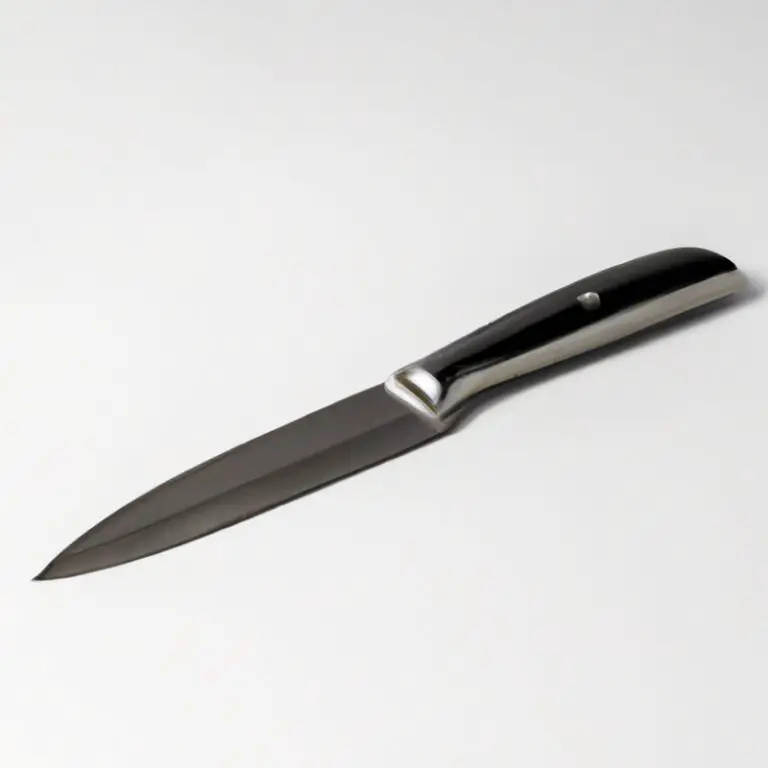How Do I Prevent My Paring Knife Handle From Cracking? Handy Tips
Key Takeaways:
- Proper storage and handling can prevent cracking of your paring knife handle.
- Avoid exposing the knife to extreme temperatures or humidity.
- Regular cleaning and oiling of the handle can also help maintain its integrity.
- Investing in a high-quality paring knife with a durable handle can save you from the hassle of frequent replacements.
Paring knives are essential tools in a kitchen, used for a variety of tasks from peeling fruits and vegetables to trimming meats. However, a common problem people face with their paring knives is the cracking of the handle.
A cracked handle not only looks unsightly but can also be dangerous.
In this blog, I will share my knowledge and expertise on the causes behind handle cracking and prevention tips. From maintenance and care techniques to choosing the right handle material, we’ll cover it all.
So, keep reading to know how you can prevent your paring knife handle from cracking and increase its lifespan.
| Prevention Method | Description |
|---|---|
| Choose the right handle material | Not all materials are created equal. Go for a handle made of durable material such as hardwood or polypropylene. |
| Don’t soak your knife in water | Water is the enemy of your knife handle. Avoid soaking your knife in water or leaving it in the sink for an extended period. |
| Hand wash your knife | Avoid using the dishwasher, and hand wash your knife with warm soapy water, then dry it immediately. |
| Avoid extreme temperatures | Don’t expose your knife to excessive heat or cold. Extreme temperatures can cause the handle to crack. |
| Oil the handle | Periodically oiling your knife’s handle will help keep it hydrated and nourished, which will prevent cracking. |
Paring knives: A vital kitchen tool
Paring knives are an essential kitchen tool due to their versatile nature and ability to handle intricate cutting tasks. With their small size and sharp blade, they can be used to cut fruits, vegetables, herbs, and meats with precision and accuracy.
However, one common problem faced by many is the cracking of paring knife handles.
Understanding the causes behind handle cracking and taking preventative measures, such as maintenance, care tips, correct cutting techniques, choosing the right material, and storage techniques, can help prolong the life of your paring knife handle. In some cases, seeking professional help may be necessary for repairing or replacing damaged handles.
Overall, by properly caring for your paring knife, it can remain a vital tool in your kitchen for years to come.
Common problem: Cracking of paring knife handles
One of the most common problems with paring knives is the cracking of their handles. This issue can be caused by a variety of factors, including excessive pressure during use, exposure to moisture, and using the wrong cutting technique.
Handle cracking can not only compromise the effectiveness of your knife but can also be dangerous if the cracks are too severe.
It is therefore important to understand the causes behind handle cracking to prevent it from happening in the first place.
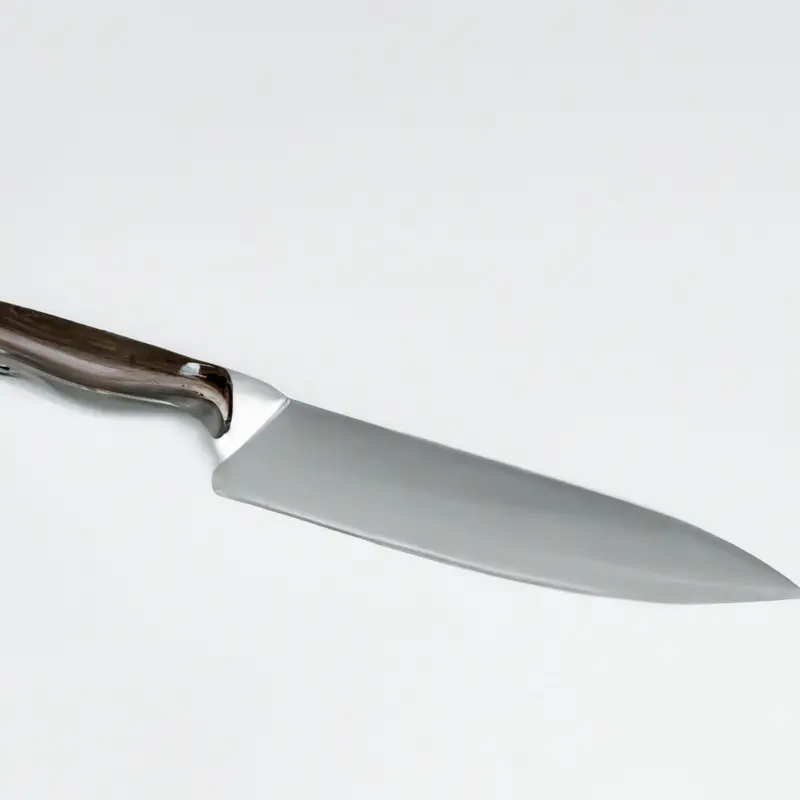
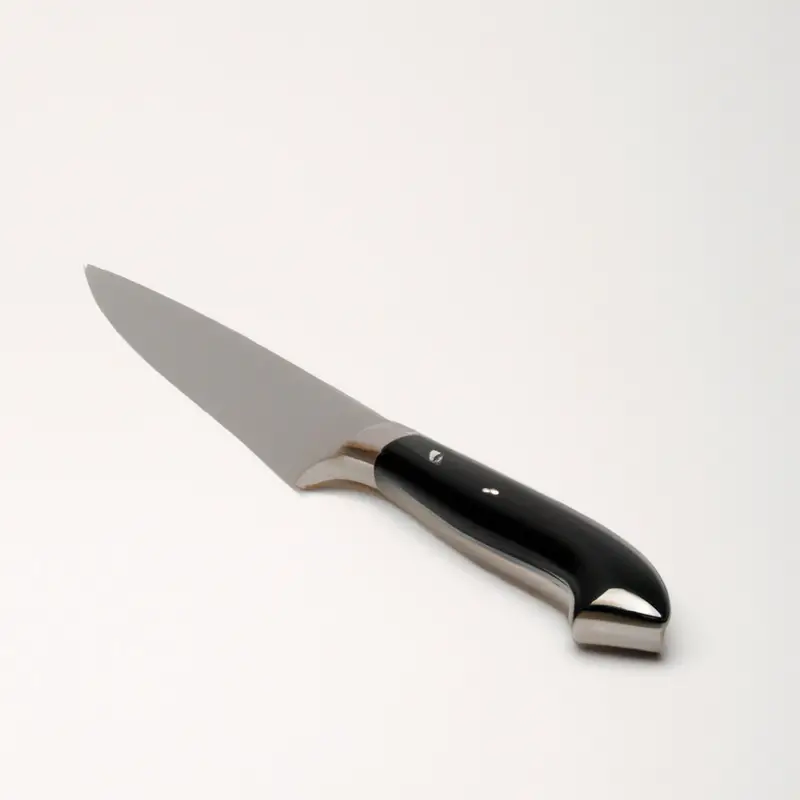
Understanding the causes behind handle cracking
Paring knife handles can crack due to various reasons such as exposure to moisture for extended periods, applying excessive pressure during cutting, and using low-quality materials. Moisture causes the wood to expand and contract, resulting in splits and cracks.
Applying too much force or twisting the knife puts unnecessary pressure on the handle, leading to cracks.
Low-quality materials may not be strong enough to withstand daily use, causing the handle to crack. Understanding the causes behind handle cracking helps prevent it from happening.
By keeping the handle dry, using the correct cutting technique, and choosing high-quality handle materials, you can prolong the life of your paring knife handle.
Prevention is key: Maintenance and care tips
Preventing paring knife handle cracking can be achieved through proper maintenance and care. Here are some tips:
- Keep the handle dry: Water can seep into the handle and cause it to expand and contract, leading to cracking. Dry the handle immediately after washing it.
- Use the correct cutting technique: Avoid applying too much pressure on the knife handle while cutting as it can cause it to crack. Instead, use a gentle grip that doesn’t put unnecessary pressure on the handle.
- Choose the right material: Opt for a handle material that is durable and resistant to moisture, such as stainless steel, polymer, or hardwood.
- Store your knife correctly: Avoid overcrowding your knife drawer or placing it with other kitchen tools that can scratch or damage the handle. Consider using a knife sheath or magnetic strip to protect the blade and handle.
- Seek professional help: If the handle is severely damaged or cracked, it may be time to seek professional help for repair or replacement.
By following these preventative tips, you can extend the lifespan of your paring knife handle and ensure that it remains in good condition for years to come.
Keeping the handle dry: Importance and techniques
Keeping the handle of your paring knife dry is crucial to prevent the handle from cracking. Moisture, heat, and chemicals can weaken the handle material, leading to damage over time.
Here are some techniques to keep your handle dry:
- Wipe the handle clean and dry after every use to remove moisture and residue.
- Avoid soaking the knife in water or using harsh chemicals to clean it.
- Store the knife in a dry and well-ventilated place to prevent moisture buildup.
- Consider using a protective cover or sheath to shield the knife handle from moisture and damage.
By following these simple techniques, you can prolong the lifespan of your paring knife handle and prevent it from cracking.
Using the correct cutting technique: Avoiding excessive pressure
Using the correct cutting technique is crucial in preventing your paring knife handle from cracking. Excessive pressure during cutting is one of the primary reasons why handles crack or break.
To prevent this from happening, hold the knife firmly but avoid gripping it too hard.
Use a light, steady pressure when slicing or chopping, allowing the knife to do the work for you. Avoid using a sawing motion, as this increases the risk of excess pressure on the handle.
Instead, use a smooth, continuous motion while cutting.
In addition, always use a cutting board with a stable and non-slip surface to prevent the knife from slipping and causing accidental pressure on the handle. It is also essential to ensure that your blade is sharp.
Dull blades require more pressure to cut, which can cause damage to the knife handle.
Therefore, sharpen your blade regularly to maintain its edge and efficiency. By using the correct cutting technique and avoiding excessive pressure, you can prolong the lifespan of your paring knife handle and enjoy flawless chopping and slicing in the kitchen.
Choosing the right material for your paring knife handle
The material you choose for your paring knife handle plays a crucial role in preventing cracking. There are various types of materials like plastic, wood, metal, and composite materials, each with its own pros and cons.
Plastic handles are lightweight, easy to clean, and offer a good grip.
However, they are not very durable and can crack or break with heavy usage. Wooden handles provide a comfortable grip and natural feel.
However, they require regular maintenance and can crack if exposed to water or moisture.
Metal handles are sturdy and easy to maintain. However, they can be slippery and uncomfortable to grip for extended periods.
Composite materials like G-10, Micarta, and carbon fiber provide a balance of durability and comfort.
They are moisture-resistant and offer a good grip, making them a popular choice among professional chefs. When choosing the right material for your paring knife handle, consider your personal preference, frequency of use, and level of maintenance required.
Invest in high-quality materials that suit your needs and budget to ensure longevity and prevent cracking.
Storing your paring knife: Dos and Don’ts
When it comes to storing your paring knife, there are a few dos and don’ts to keep in mind to prevent handle cracking: Dos:
- Store your paring knife in a knife block or a sheath to protect the blade and handle.
- Keep the knife in a dry area to prevent moisture from seeping into the handle.
- Store your knife separately from other utensils to avoid any wear and tear on the blade or handle.
- Clean the knife before storing it to prevent food debris from causing damage.
Don’ts:
- Don’t store your knife in a drawer with other utensils as they can scratch or damage the blade or handle.
- Don’t use a magnetic strip to store your knife as it can cause the blade to become magnetized and potentially damage the handle.
- Don’t put your knife in the dishwasher as the high temperature and harsh chemicals can damage the handle and blade.
By following these simple dos and don’ts, you can ensure that your paring knife remains in good condition and prevent cracking of the handle.
Repair vs Replacement: When to seek professional help
When a paring knife handle cracks, the decision between repair and replacement depends on the severity of damage. Minor cracks can be fixed with a food-safe adhesive, but if the damage is severe, it’s better to replace the handle or the entire knife altogether.
Professional help should be sought if repairing it yourself seems risky or if the repair didn’t hold up.
A skilled craftsman can fix the handle or replace the knife’s blade and handle. A professional repair can extend the knife’s life and save you money in the long run.
Ultimately, when deciding between repair and replacement, consider the severity of damage, the possibility of repairing it safely, and the overall condition and age of the knife.
Final Verdict
A paring knife is an essential tool in any kitchen, but it can lose its functionality if the handle cracks. By understanding the causes and implementing prevention and maintenance tips, you can keep your paring knife handle intact.
Remember to keep the handle dry, use the correct cutting technique, and choose the right material for your handle.
Proper storage and knowing when to seek professional help are also crucial. By following these guidelines, you can prevent your paring knife handle from cracking and ensure it lasts for many years to come.
Start caring for your paring knife today and enjoy the perfect cut every time.

